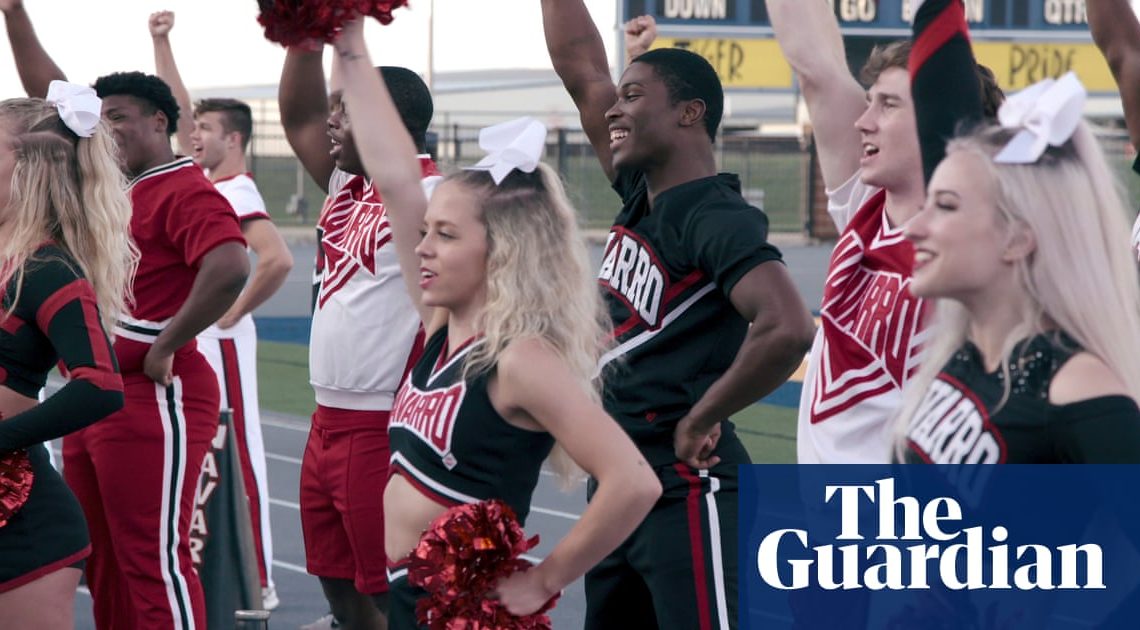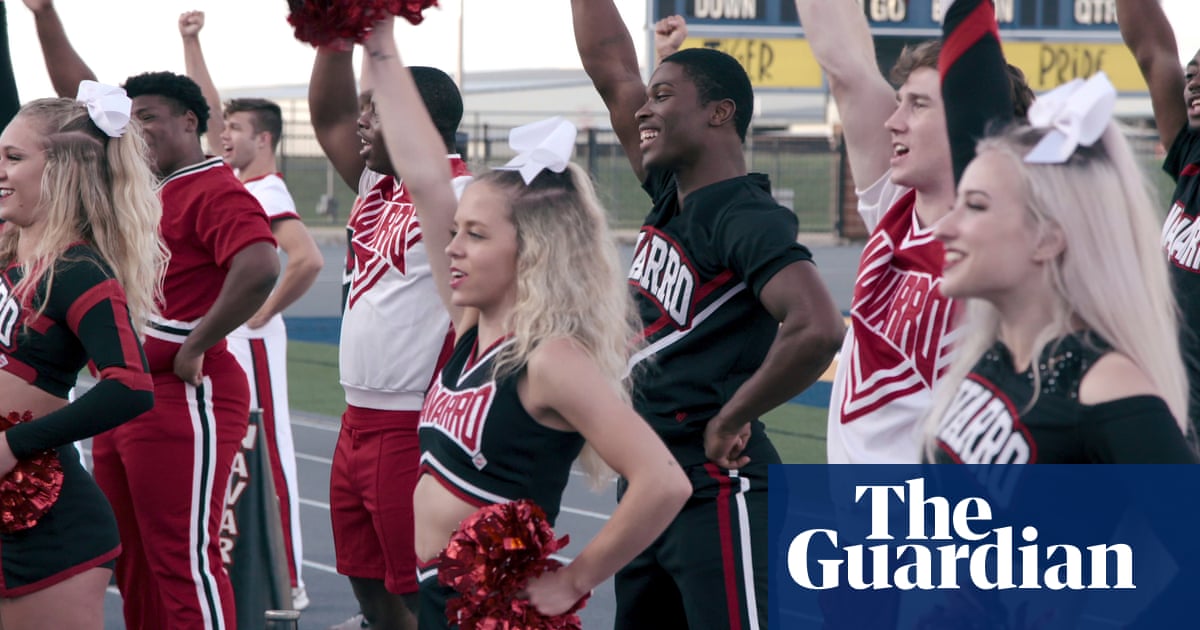
Leading the way: how Cheer became a Netflix megahit
February 20, 2020The docuseries, following a competitive cheer squad, has become an unlikely smash gaining A-list fans and an endless trove of memes

Its nearly impossible, if you have been on the internet in the past couple weeks, to miss the sprawl of fame that is Cheer, the Netflix docuseries following the nations best junior college competitive cheer squad, Navarro College, as they train for the 2019 national championships in Daytona. Netflix, notoriously stingy on its figures, hasnt released official viewership data on the series, but since its premiere in December, it has generated an avalanche of self-generating hype and content. It has led to enthralled thinkpieces, pieces on the pieces to read about Cheer and a cache of memes. Its cast members have appeared on the Today show and the Ellen DeGeneres Show, in virality-designed videos faux-casting the movies, front row at a New York fashion week show. Jerry Harris, a breakout star from the the show anointed a human sunbeam by the New Yorker, worked the Oscars red carpet for Ellen and was fawned over by Cheer fans including Greta Gerwig, Laura Dern, Rebel Wilson, Billie Eilish and Kathy Bates, producing one of the weeks most joyous videos on the internet.
The six-hour docuseries, filmed during the three-month run-up to the 2019 national championships, might seem like an odd show to find a massive audience. The sport of competitive cheerleading is small, and greatly overshadowed by the cultural archetype of the high schooler with pom-poms. The vast majority of Americans have never heard of Navarro, a two-year junior college, or its town of Corsicana, about 30 miles south of Dallas. So how did Cheer become the most talked-about TV show of the moment?
Credit is partly due to the series technical brilliance. Directed by Greg Whiteley (creator of Last Chance U, another series about the under-studied stakes of junior college athletics), Cheer closely observes, with at times sickening proximity, the brutal music of the sport the slap of skin smacking skin, brisk cushion of a basket catch, horrifying thud of a maneuver gone awry. Whiteley lingers on the toll of attempting near-impossible group gymnastics, and the mesmerizing work of practice when the stunts work, its thrilling; one misstep is your teammates concussion or broken bone. And the stakes are deceptively high the team practices for one, and only one, two-minute-and-15-second performance at nationals.
Those stakes carry off-mat, too many of Navarros athletes have turned to the sport, and coach Monica Aldama, to provide structure and meaning where their upbringings did not. Harris, a full-bodied, vibrant black man from Chicago who grew up partly in motels and friends houses, uses enlivening mat talk cheers from the sidelines to cope with the pain of losing his mother in high school. Lexi Brumback, a star tumbler, credits cheer for keeping her out of jail. Cheer thus deepens and inverts an archetype so cliched and steeped in Americana its practically baked into the national apple pie: taut-bodied, pretty and popular girls, almost always white, necessarily affluent.
The show also offers a mesmerizing blend of genres the cinma vrit that bleeds off-screen (characters are also real people you can follow on social media; the story never ends if you keep paying attention) of reality television (especially portals into intense and insular worlds such as Dance Moms) and the emotional pathos of finely observed dramatic television (the show is basically Friday Night Lights but starring women and gay men, with a female coach).

Theres also the built-in star vehicle of coach Aldama, the quietly domineering mother figure in knee-high boots overseeing every practice and often her kids lives outside practice with an unimpressed stare and filming iPad in hand. Undyingly beloved by her team, Aldama has emerged, in the weeks since Cheers release, as a polarizing figure; she is, on the one hand, the type of unflappable, my-way-or-the-highway coach protagonists Americans are reared on (see: Friday Night Lights, Remember the Titans, Stick It), a conservative, conventionally attractive woman who nevertheless defends her athletes, especially her boys almost entirely gay men from the harsh prejudices of small-town Texas. Sporting a blow-out, in charge a woman, in other words, ripe to be celebrated for her boss-ness (she moved Reese Witherspoon to tears; the Cut profiled How She Gets It Done). On the other, she can be uncompromising to the point of harm; in one of the shows most controversial scenes, she watches stony-faced as an athlete, forced to practice for defying her, writhes in pain from re-injuring his back. Cheer has a darker side, as Amanda Mull wrote in the Atlantic, of athletes with no pay and little support breaking their bodies again and again, all for the greater glory of an authority figure they dare not question.
But perhaps the biggest catalyst for Cheers rocket to fame is the subjects natural command of social media, and in particular, the skill of the influencer. On a base level, professional influencing and competitive cheer share the same DNA: having, as Monica says of the lithe Morgan, the look, the fantasy of being, briefly and in isolation, perfect; the performance of enthusiasm, of eliding pain or discomfort into a smooth, flawless finish; the allure to mold and control ones reception to winsome, adulating ends. Competitive cheer, as the show so deftly portrays, is of course a sport of the collective; you have to trust someone will be there to catch you, and Navarros routines are two minutes and 15 seconds of excellence emanating from bodies in motion rather than a single star.
Still, the small-worldness and glam of the sport lend easily to individual followings, and social media stardom at least, on the limited scale of cheer world is part of the fabric of the show. Several of the cast members already had significant social media followings before the series aired. One of its stars, Gabi Butler, is a bona fide cheerlebrity, a public face for the sport who already parlayed a YouTube following into magazine covers and endorsement deals before Netflix. As is discussed frequently on the show, there is no higher-level competitive cheer career after Navarro; after Daytona, you can either leave cheer behind, work in coaching, or parlay notoriety into something else.
View this post on InstagramA post shared by Lexi Brumback (@lexisbrumback) on
One of the more uncanny feelings of watching the show now, at the crest of its virality, is the experience of watching the stars fame explode, both predictably and unknowably, in real time as their arcs wrap on screen. In the series, after Daytona, Lexi is kicked off the team for being caught around drugs; now, you can check her Instagram (now with more than 689,000 followers) to see her post her return to the Navarro gym (honey, Im home) itself generating headlines and pose on the Netflix HQ rooftop in Los Angeles, market nutritional supplements (in the comments: get that moneyyy) and promote codes for sponsored giveaways. Morgan Simianer, with 1.1 million followers, has outtakes for an ad with Buick and a photo with Kendall Jenner, backstage at Ellen. Butlers account, with 1.4 million followers, mixes cheer photos with beachside photoshoots. Harris, with a million followers, just signed with an influencer management firm. On the red carpet at the Oscars, Harris asks Hamiltons creator, Lin-Manuel Miranda, what hes most looking forward to. Finishing the first season of Cheer and seeing if you make mat, he says, turning to the camera in mock seriousness: Dont spoil it for me.
The events of Cheer are locked, but life, of course, goes on outside the frame. Netflix has neither confirmed nor denied a second season of the series, although its unclear how it would incorporate its original crew, now stars in their own right. But given Netflixs penchant for retaining homegrown stars such as To All the Boys I Loved Befores Noah Centineo or the Queer Eye guys, who star in follow-up projects for the streamer it seems not unlikely that the Cheer crews fame trajectory could land back at the company where it started. Because a streamer hit almost always promises one thing: more content. Stay tuned for the potential wave of Cheer TV.
Read more: http://www.theguardian.com/us

